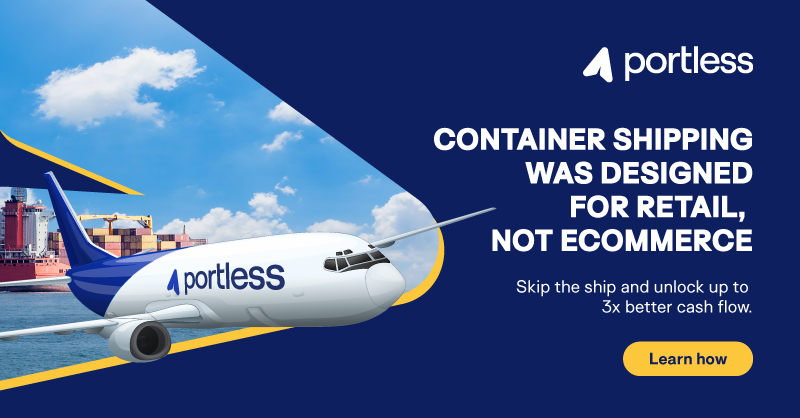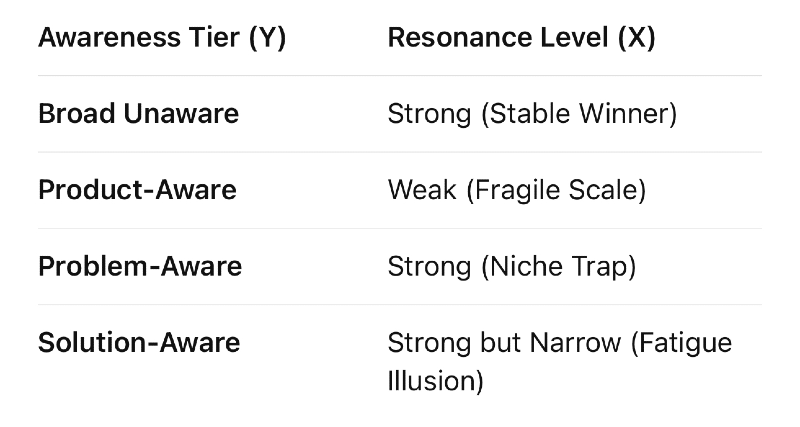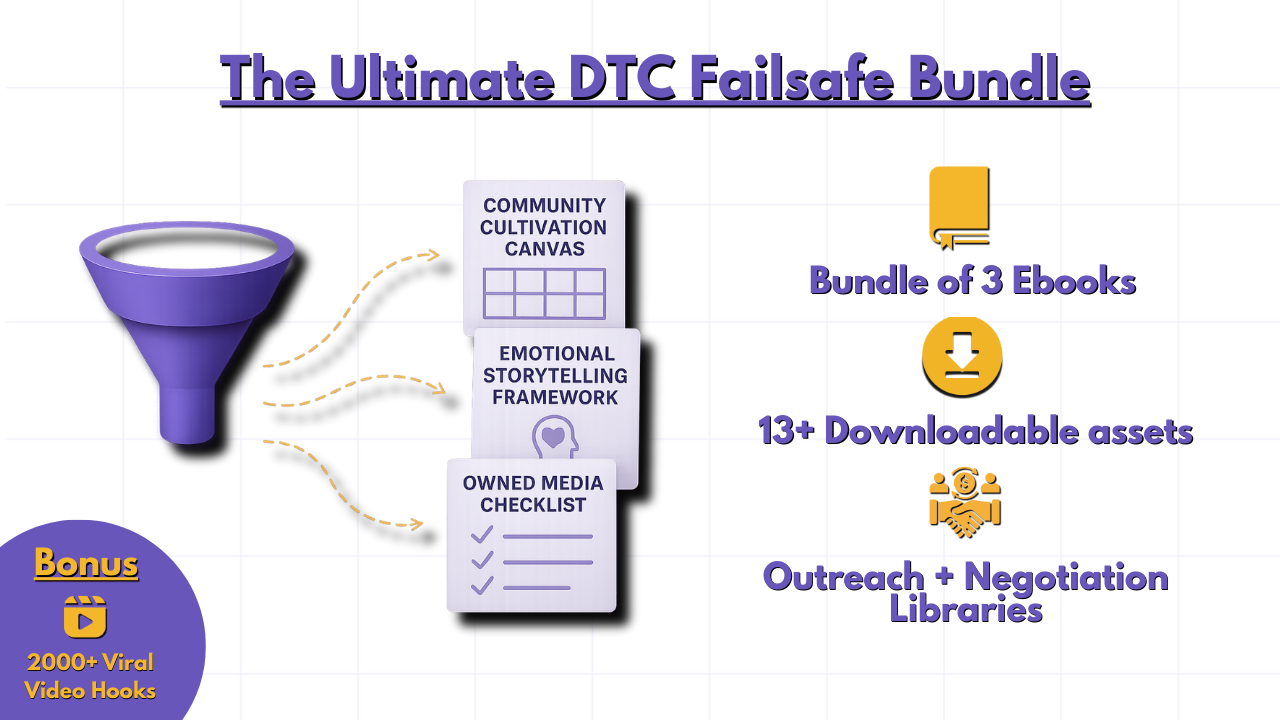Stop Scaling Fragile Ads
🧪 Stress-test resonance before spend multiplies losses fast, Meta Expands Attribution with Incremental Tracking, and more!

Hey there Smarty 👋
Are you geared up to catch the latest and greatest in quick shorts?
And just a quick heads-up! If you stumbled upon us through a friend, make sure to subscribe here! That way, you’ll never miss out on the trending shorts.

Together with Portless
Still Shipping 90 Days Out? That’s a Death Sentence for Growth.

Your inventory is stuck on the water for 60–90 days while customers see “out of stock.” Cash is locked, launches stall, and your ad spend dries up. That’s not just logistics, that’s a compounding growth cap.
Here’s what Portless unlocks:
✈️ Factory-to-customer shipping in just 6 days
📦 Restock SKUs in 3–5 days, not 3 months
🚀 Launch and test products instantly without warehousing risk
💸 Cut lead times by 90% and recover 30–40% more cash monthly
This is the edge Portless brands run on.
Instead of waiting three months to break even, their CAC payback shrinks to 7–14 days. That’s real liquidity recycled into ads, launches, and scale while competitors watch containers drift.
In eCommerce, speed isn’t nice-to-have; it’s the moat that decides who wins.
Get a custom quote for your brand now!

🧠 Audience Fragility Detection Systems
Why your best ads collapse at scale, and how to pre-empt it before you burn $50K.
The worst-performing ad isn’t the one with low CTR.
It’s the one that tricks you into scaling too early, only to implode at $20K spend. Most creative “fatigue” isn’t fatigue.
It’s audience fragility, when your ad is only resonant to a narrow awareness tier, but you scaled it as if it was a universal winner.
This is where elite brands flip the script:
They don’t just optimize creatives for CTR… they stress-test for fragility.
What is Creative Fragility?
An ad is fragile when its performance collapses as spend increases without changes in offer, landing page, or funnel logic.
Symptoms:
- 2.5x ROAS at $5K → 0.8x ROAS at $50K
- High CTR but poor CPR (click-to-purchase ratio)
- Excellent in retargeting, weak in prospecting
- Performs in interest stacking, tanks in broad
Why it happens:
Most TOF creatives are secretly mid-funnel. They work for “in-market” or solution-aware buyers, but collapse when shown to broader cohorts.
Fragility Detection Mental Model
Plot your ad using this matrix:

You’re looking for top-left quadrant ads, broad awareness + strong resonance. These are your scalable winners.
The Fragility Sandbox Protocol
Before scaling, test each ad across 3 sandbox audiences:
- High Affinity – Returning users, 10% LLAs, warm stack
- Mid-Intent – Engaged video viewers, ATC audiences
- Cold Broad – Broad + interest + exclusions
Fragility Threshold:
If CPR delta > ±15% between cohorts, your ad is fragile. If stable across tiers → greenlight scale.
Example
A beauty brand saw a UGC ad hit 3.1x ROAS at $10K, then tank to 0.92x at $40K.
We ran the sandbox test and saw CPR drop 31% in cold traffic. Rebuilt the ad with an emotional cold-open + problem-first narrative → stabilized at 2.2x ROAS even at $75K+ spend.
The Hidden Cost of Fragility
Fragile ads don’t just fail. They:
- Corrupt your ROAS benchmarks
- Misinform your creative roadmap
- Bloat your CAC, inflate CAC payback windows
- Misallocate your scaling dollars
Scaling without fragility detection is like building on sand.
Want to eliminate fragile ads from your pipeline?
Build your own Fragility Detection System. Every $10K mistake you avoid pays for itself.

Together with The Operator's Stack
Your Playbook for Growth That Doesn’t Vanish Overnight.

Every sale you buy with ads comes with a countdown. The second the budget stops, so does growth. That isn’t scaling, it’s sprinting in place.
Networked Growth Engines is how you get off the treadmill and start compounding momentum without paid spend.
Built from 3+ months of research into campaigns that turned customers into multiplying assets, it gives you systems for:
- Communities that sell for you with setup checklists, engagement calendars, and measurable KPIs.
- Referrals that deliver 5× ROI powered by your own viral coefficient forecast calculator.
- Partnerships that triple reach with ready-to-send outreach scripts and timelines.
And when you buy today, you’ll also get $900+ in high-value bonuses for just $9:
- Rewriting the DTC Rulebook - Counter the 3 shifts killing funnels.
- Financial Alchemy - Cashflow and growth timing strategies to scale with confidence.
- 2,000+ Viral Video Hooks - Updated monthly to keep your creative pipeline unbeatable.
Stop renting growth that disappears. Start owning growth that compounds.
Download your bundle now and build systems that work even when ads stop.

📑 Meta Expands Attribution Tracking with Updated Documentation
Meta has refreshed its Ads Manager documentation to detail the addition of incremental attribution, an AI-driven model built to more accurately link ad engagement with conversions. The update now clearly outlines how both attribution models work, giving advertisers a better view of how performance is tracked.
The Breakdown:
1. Standard Attribution Explained - The documentation reconfirms that standard attribution credits conversions within fixed time windows (1–7 days) tied to impressions, clicks, or video plays. This rules-based approach remains the default option for most ad sets.
2. Incremental Attribution Defined - Meta has now formally documented incremental attribution, which uses machine learning to predict whether a conversion was caused by an ad, introducing optimization and reporting based on incremental conversions, going beyond simple time-window tracking.
3. Clearer Model Selection in Ads Manager - The refreshed documentation also makes it explicit that advertisers can now choose between standard and incremental attribution directly within Ads Manager.
The documentation shift signals that incremental attribution is no longer a hidden feature but a core part of Meta’s ad measurement system. For advertisers, this means the ability to benchmark performance in two ways, short-term engagement vs. longer-term incremental lift, and to decide which view better reflects their business goals.

🚀Quick Hits
💡 Guessing trends is expensive; missing them is worse. Particl uses real consumer data to surface breakout categories, materials, and aesthetics before ad channels get crowded. That’s how 10,000+ brands like Gymshark and Chubbies cut entry costs by 35%; you can too. Start your free trial today.
📱 Instagram launched a dedicated iPad app, opening to Reels by default and featuring new layouts, tabs, and expanded comment views, rolling out globally on iPadOS 15.1+ with Android tablet support coming.
🔔 Instagram updated its notification ranking, using machine learning to downrank repetitive alerts, aiming to reduce fatigue and boost CTR, though it may further limit creators’ organic reach among engaged followers.
🍏 Apple will launch World Knowledge Answers in 2026, an AI search engine powering Siri and Safari with multimodal results, built on LLMs and Gemini, reshaping search competition with Google and ChatGPT.
📊 14% of U.S. consumers make impulse buys within one minute of seeing an ad, and the main driver is urgency tactics, with 70% citing flash sales and countdown timers as their trigger. Fast checkout adoption further boosts results, with conversions up 46% and customer retention up 71%.

That’s a wrap for today! Tell us your thoughts about today's content as we line up more Shorts! And don’t hesitate to share this with someone who’d adore it. 🥰
